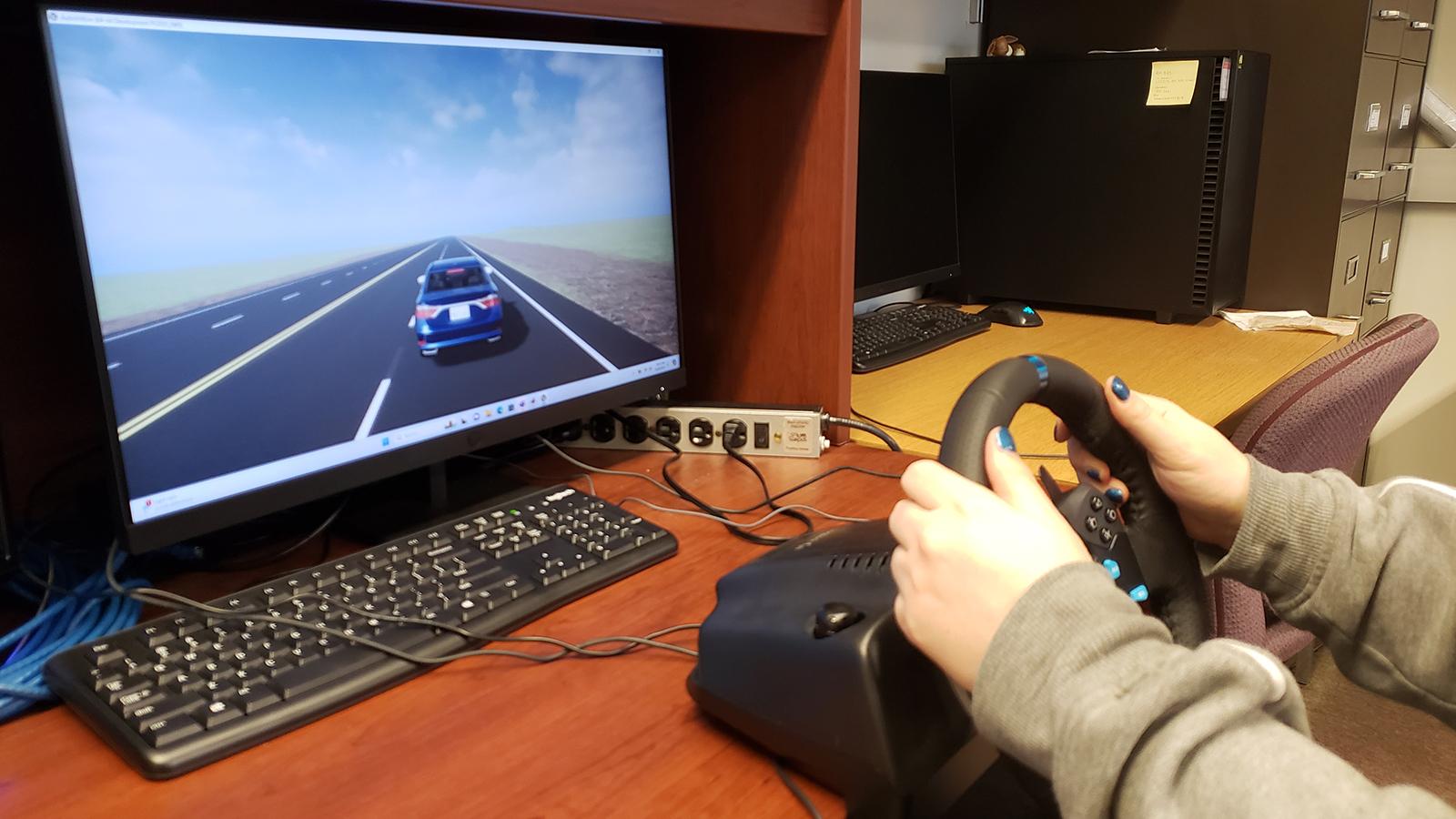June 21, 2024

From lane-keep assistance to blind spot detection, today’s cars come equipped with autonomous driving features that make driving easier and safer.
Rene Mai, a doctoral student at Rensselaer Polytechnic Institute, imagines a world in which humans and machines complement each other’s strengths to do more together, a concept known as “symbiotic autonomy.”
“The big question driving my research is, how do humans — who build very complex machines — achieve peak performance with technology,” said Mai, who is studying mechanical engineering. “Driving is a complex task, and one that humans are pretty good at, especially when it comes to assessing new situations quickly. But there are things that autonomous features do much better than people that are very useful from a safety and performance perspective.”
Autonomous features in cars can help drivers improve their reaction time, maintain safer following distances, and even parallel park. And, perhaps most importantly, “unlike people, they don’t get distracted,” Mai said. “In my work, we’re trying to make these features more reliable in more situations.”
With support from the Link Fellowship, Mai will use a high-fidelity driving simulator to explore how autonomous features change the way people drive and ways human driving data can enhance these features.
This work could help make lane-keep assistance technology safer and more efficient, Mai said.
“Research shows that lane-keep assistance helps prevent accidents, and it’s now required in all new vehicles. However, it doesn’t work well in all situations, for example, when lane markings are faded or have been redrawn. People, however, are quite good at navigating these scenarios. Can we use that human driving data to train the tool in real time to recognize where the lane lines should be?” Mai said.
“Rene's research on building new modeling and simulation tools for understanding driver behavior in autonomous (and semi-autonomous) vehicles will lay the foundation for best practices in ‘shared autonomy’ between human- and machine-intelligence,” said Sandipan Mishra, Ph.D., a professor in the Department of Mechanical, Aerospace, and Nuclear Engineering and Mai’s doctoral adviser. “We are very excited by the promising early results from her research and look forward to key breakthroughs stemming from this work that will advance the adoption of safe and efficient autonomous vehicles.”
In addition to the Link Fellowship, Mai is also a Pathways intern at the NASA Ames Research Center, where she works on the Digital Information Platform to improve air traffic management and make air travel more efficient and greener, and in the Human-Autonomy Teaming lab, where her work focuses on human modeling for urban air mobility applications.
While her work focuses on finding the best way to get from point A to point B, Mai herself took a somewhat indirect path to her current career trajectory.
After majoring in physics at Texas A&M University, she attended law school at the University of Texas and eventually became a patent attorney. As a patent attorney, Mai worked with researchers and engineers, experiences that spurred her decision to pivot to mechanical engineering and pursue a Ph.D. at RPI.
After completing her degree, Mai hopes to continue her work at NASA or become a university researcher.